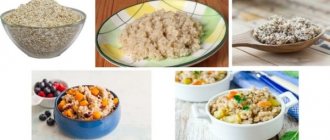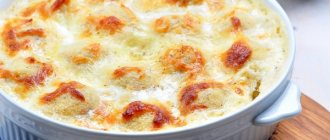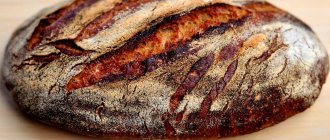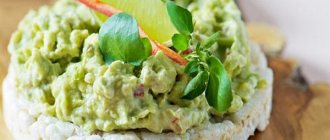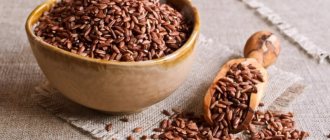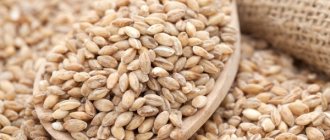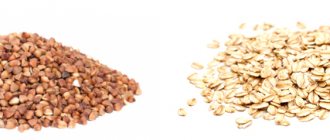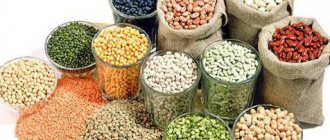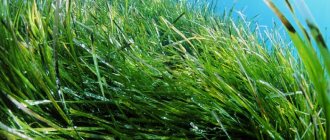Cottage cheese belongs to the category of those food products that have been known to mankind since ancient times. It is useful as a supplier of useful substances and microelements to the body, including calcium, which is important for health.
This natural product is used as part of many diets and is used to treat certain diseases.
Considering these factors, it is difficult to doubt the beneficial properties of cottage cheese and its combination with BJU. It is important to consider the composition of the product. One of the most beneficial for humans is fermented milk product, the fat content of which is 5%.
Calorie content and nutritional value of cottage cheese 5 percent
This product option, the most convenient for inclusion in the diet of a healthy lifestyle supporter, contains only 121 kcal per 100 grams. This amount contains about 15 grams of protein, 5 grams of fat and 4.5 grams of carbohydrates.
If you eat this amount for breakfast, your daily protein requirement will be fulfilled by 23%. Indicators for fats will be 18% of the daily value and about 17% of the daily value of carbohydrates.
Calorie content and BZHU of cottage cheese of other fat content
The calorie content and BJU of product variants with other fat content levels may differ:
- The low-fat version becomes the minimum option. It contains from 80 to 85 kcal. The fat-free product contains more than the usual amount of protein. Having eaten only 100 grams, the norm for knocking on the amount of protein is fulfilled by 25-27%. It contains almost no carbohydrates.
- The option with a fat content of 9% is very popular. When calculating BZHU, a serving is from 20 to 22% of the daily value of proteins. Fats also make up about 20% of the daily value, about 18% of the daily value will be carbohydrates. The calorie content of this option reaches 135 kcal.
- Many people from childhood learned about delicious homemade varieties, the fat content of which is about 20-25. According to BJU standards, the amount of proteins in them is noticeably reduced. Almost doubles, and the percentage of fats and carbohydrates increases similarly.
Note! Supporters of a healthy diet and dietary fat are recommended to choose options with 5% or 9% fat content.
A higher percentage can lead to weight gain. A fermented milk product that contains no fat is practically not digestible.
Effect on calorie content of products added to cottage cheese
Any additive has a strong effect on KBJU. Popular recipes, where curd mass becomes the basis, sometimes even turn out to be harmful. For example, cottage cheese with sour cream will have an acceptable calorie content. It can be eaten in the evening, moderately limiting the amount. A mixture with sour cream and sugar will become a harmful dish.
The effect on calorie content of added ingredients must be taken into account. The amount of vitamins and minerals may also be reduced, resulting in a decrease in the efficiency of their absorption. Calorie content of popular supplements per 100 grams:
| Ingredient | Calorie content, kcal per 100 grams |
| Sugar | 387 |
| Sour cream (20%) | 193 |
| Sour cream (30%) | 196 |
| Honey | 304 |
| Walnut | 654 |
| Berry topping | 255 |
| Raisin | 299 |
| Dried apricots | 241 |
| Maple syrup | 260 |
| Cinnamon | 247 |
| Bananas | 95 |
| Condensed milk | 321 |
| Avocado | 160 |
| cucumbers | 16 |
| Pumpkin | 26 |
| Tomatoes | 24 |
Even a moderate amount of additional ingredients can negatively affect the calorie content, fat percentage and healthfulness of a cottage cheese dish.
It is necessary to carefully evaluate the feasibility of the presence of a particular product. Recipes for cottage cheese salads are less harmful in terms of calories and impact on vitamins and minerals.
Meals where it is convenient to eat cottage cheese
A feature of this product is its versatility. This product option is recommended to be included in the diet at any time of the day. It can be an excellent healthy breakfast option. Light and low-fat varieties can be introduced into the diet in the afternoon. This product is not stored in fat mass.
Options for eating fatty varieties
Rustic varieties of this dish with high fat content can be healthy and used in everyday nutrition. The only recommendation is to use it in the first half of the day.
Fat cottage cheese is ready to become an independent dish or be included in baked goods or desserts.
Types of cottage cheese depending on fat content
Even knowing well the value of this product for our health, you can get confused by the names offered by supermarkets. Today, just by gradation of fat content, there are several types of healthy fermented milk products.
It is grainy (farm-made), it is made from whole milk (the fat content of the cottage cheese is 15 or 18% - it will depend on the source raw material and its density).
Cottage cheese from separated milk (here the cream is first separated, and only then the final product is made) can have different fat content:
- low-fat curd mass has 0%;
- 5% cottage cheese, respectively, has 5 g of fat per 100 g of product;
- 9%;
- 18%;
- cottage cheese with 22% (the fattest).
What is the nutritional value of cottage cheese? What is the fat percentage? Who and why is it useful to buy a product with low content?
Composition and beneficial properties of 5% cottage cheese
It is the fermented milk product with 5% fat content that is among the most convenient options for consumption:
- It is rich in large amounts of easily absorbed calcium.
- It also contains iron, sodium, potassium and phosphorus. The combination of these components helps strengthen bones.
- Cottage cheese 5% fat helps remove excess water from the body.
- The composition includes a useful complex of B vitamins, vitamins A, E, PP, D.
- Amino acid bacteria in its composition normalize the digestive system.
- This product is best consumed as food without preliminary heat treatment, which significantly reduces its beneficial properties.
Application
Cottage cheese 5% is considered a completely dietary product; it is used in preparing dishes for people with diabetes. Use it to make delicious cake layers, cheesecakes, brownies, casseroles and cottage cheese desserts. Cheesecakes made from fresh cottage cheese will perfectly replace store-bought cookies. Cottage cheese is added to the dough for yeast pies, buns, and Easter cakes. For example, the famous Easter cottage cheese with candied fruits, poppy seeds, cream, chocolate.
Cottage cheese is versatile in preparation; it can be baked, used as a filling and eaten raw.
Market Analytics
- Global cosmetics market 2021: an unprecedented test for the global cosmetics industry
- Top 10 Cosmetic Research and Development of 2021
- 2020 in the beauty industry – innovation without borders
Convenient search for beauty salons on our website
Beauty salons in Moscow Beauty salons in St. Petersburg Beauty salons in Ekaterinburg Beauty salons in Novosibirsk
Latest blog posts on our website
- Naturecream / Properties of the “Sunny” oil itself
- Naturecream / “Sugar” wrinkles - or what glycation can do
- Naturecream / Esterified oils
- Naturecream / Arnica - the magical plant of alchemists
- Naturecream / Tremella Extract - Snow Mushroom Detox for Skin
- Prostye-sovety / How to visually enlarge your lips with makeup
- Naturecream / Apricot kernel oil for face
- Naturecream / MATRIXYL3000 - the best skin elasticity stimulator
- Naturecream / SPF in Natural Oils
- Naturecream / Geranium (Pelargonium) oil for skin health and beauty
Latest forum topics on our website
- Natalya / How to properly make a gelatin mask?
- Mrs._Smith / Badly sunburned! What to do?((
- Ice / Is it necessary to combine fitness classes with a diet?
- Antonova / What can be used for hair loss?
- Radio operatorKat / Who was on a protein diet?
Other articles in this section
| Amadeus cheese Amadeus cheese is an Austrian hard cheese. Made from pasteurized cows' milk of the highest quality. The finished product has the shape of a round cylinder, with a diameter of about 25 cm, the height of the head of cheese is up to 10 cm. The average weight of a head of Amadeus cheese is about 4 kg. The cheese was named after the famous Austrian musician Wolfgang Amadeus Mozart. Amadeus cheese was first made in the city of Voitsberg. The production process is controlled in accordance with all the laws of Austrian cheese making. During production, the cheese heads are washed with wine, and subsequently the cheese is covered with a thin film of noble white mold. The top of the cheese is covered with black wax, which protects the cheese from losing its aroma. The color of the cheese is deep yellow. The structure of the cheese is elastic. Fat content of Amadeus cheese is 50%. There is an aroma of alpine herbs. The cheese is characterized by a delicate creamy taste. Cheese shelf life is 3 months. Calorie content 378 kcal per 100 g. During the preparation process, the cheese is stored in special spruce containers for more than two months from the production date. The composition includes pasteurized cow's milk, rennet, table salt, food coloring, catalysts and preservatives. |
| Sbrinz cheese Sbrinz cheese is a delicious cheese from the heart of Switzerland. It has an islandy, piquant taste and is made from dense, selected cow's milk, rennet and salt. This is a natural product and has no chemical additives. |
| Altai cheese Altai cheese was created in the thirties. This was a new technology that was developed taking into account the conditions that existed at that time in the Altai foothills. Cheese manufacturers have abandoned the hopeless idea of making cheese like Swiss cheese. Local products were unsuitable for this - as it turned out after numerous pointless attempts. As a result, such a variety of cheese as Altai was developed. Its main distinguishing feature from Swiss cheese was that it needed much less time to ripen, and the milk needed to be pasteurized. |
| Green Cheese Switzerland is the birthplace of one of the most famous cheeses in the world, namely green cheese. This dairy product is produced by the German company Geska. Green cheese is made only from completely skim milk, adding flowers - sweet clover and blue fenugreek. This whole mixture is heated, and then citric and acetic acid are added. After curdling the milk, cheese makers strain out the whey, pour it into special cones and leave it to settle for a week. |
| Suluguni cheese Suluguni is a real Georgian cheese, the roots of its origin go back to ancient times. It is believed that this is the oldest type of cheese that originated in the Caucasus. Suluguni's admirers are the peoples of Asia and Moldova. The cheese has a dense consistency, irregular shape, light color, it is low in calories, moderately salty, has a milky smell, and has no contraindications. |
| Ryazhenka 3.2% The fermented milk product ryazhenka is a traditional drink of Ukrainian cuisine. It is obtained from baked milk and cream by lactic acid fermentation, adding bacteria - Bulgarian bacillus and streptococci. Ryazhenka has a uniform consistency, its color can range from yellowish to pale pink. The product has a creamy milky taste and smell. Most often, fermented baked milk is produced with 3.2% fat content. |
| Glazed cheese A product such as glazed cheese was released in the 30s in the Soviet Union. But they did not look like a modern manufactured product. Their taste was very different, since instead of sugar, jam and condensed milk, they add salt, cinnamon and even pepper. It wasn't until the late 50s that the first glazed cheese was produced that tasted sweet. But they were quite difficult to find, and the cheeses were very expensive. If you suddenly came across this product in a store, it was a huge success. Nowadays you can find a wide variety of this product. Cheeses are sold with all sorts of fillings, for example, jam and boiled condensed milk. The product also comes with the addition of vanillin, chocolate or without additives. |
| Kefir, 3.2% This fermented milk drink is obtained as a result of fermentation (fermented milk and alcohol) of cow's milk. An active role in this is played by the so-called kefir grain - a mixture of several types of microorganisms. The color of the drink is white, the consistency is uniform. |
| Acidophilus 3.2% sweet Acidophilus 3.2% sweet is a complex fermented milk drink, which is made by complex technological fermentation of high quality milk with certain groups of bacteria of various biological profiles. Most often, it is acidophilic microorganisms that act as the basic component of this interesting drink. As a matter of fact, the name of the fermented milk product was created taking them into account. |
| Baltic cheese The name of many cheeses is traditionally associated with a particular area where they appeared and are in greatest demand or depends on the technological method of their preparation. One of the types of semi-hard cheese with the addition of rennet components is Pribaltiysky cheese, the recipe of which is based on the ancient traditions of Baltic cheese makers. For its preparation, the double heating method and cow's milk are used to obtain the combination of taste and consumer parameters that a person needs. |
Harm from eating cottage cheese
Surprisingly, even such a useful natural product can in some situations cause harm to the body.
Contraindications include:
- Individual intolerance
- People suffering from atherosclerosis are advised to reduce the amount of protein in their food due to this disease.
- Not recommended for exacerbations of gastritis or other diseases of the gastrointestinal tract.
Note! This product is dangerous to eat if it is not fresh. This can cause serious poisoning.
Cooking cottage cheese - healthy and tasty!
Cottage cheese according to this recipe turns out to be delicate in taste, reminiscent of curd yoghurt. We will prepare it on the basis of kefir with a fat content of two and a half percent. Place it in the freezer in advance; you can do this overnight if you plan to cook in the morning.
Ingredients:
- kefir with a fat content of 2.5% - one liter.
Preparation:
- Remove kefir from the freezer.
- It was thoroughly frozen, as can be seen from the “pot-bellied” packaging.
- We will also prepare a clean piece of gauze.
- Cut off a piece of gauze. It should be quite large.
- Cut the packaging and remove the frozen kefir from it.
- That's how unusual he looks.
- We spread the gauze piece. We make two layers.
- Place a kefir “block” in the center of the gauze.
- We tie the gauze. Let's hang it in any convenient place.
- Place a container under the gauze so that the whey drains into it.
- We wait for the whey to drain. This process will take at least six hours.
- You will end up with a lot of whey.
- And in gauze the mass will decrease in volume.
- Pour the whey into a bottle. You can use it to make okroshka or bake delicious pancakes. At the end you will get approximately six hundred to seven hundred milliliters of whey.
- Let's unfold the gauze piece.
- The product is ready. You can put it in cups, cover and store in the refrigerator.
The use of cottage cheese in dietetics
The unique properties of cottage cheese include ease of use in dietetics. It is useful with a high degree of saturation. Brings a large amount of vitamins and microelements beneficial to the body in one meal. The product is often used as a basis for diets.
Proponents of a healthy lifestyle offer several options for dietary restrictions:
- Three-day, using only cottage cheese for food. A day you should consume about 800 grams of a product with 5-9% fat content and water or tea without sugar. Allows you to reduce weight by 3-5 kg.
- A seven-day cottage cheese diet based on the inclusion of fermented milk products, fruits and vegetables in the diet helps reduce body weight up to 8 kg per week.
- A diet for 7-10 days of cottage cheese and kefir or cottage cheese and green tea with the inclusion of fruits and vegetables in the diet.
There are many options. They are effective and help you lose weight. At the same time, the feeling of hunger is almost invisible, the product satisfies well. It is beneficial for the stomach and gastrointestinal tract.
Good to know! A special feature is the ability to normalize metabolism, speed up metabolism and normalize the functioning of the central nervous system.
Another advantage is the willingness to act as a natural diuretic.
The nutritional value
The acidity of the curd mass is neutral, which allows it to be used for patients with most diseases of the gastrointestinal tract. The absence of preservatives and the presence of a wide range of vitamins and beneficial microelements make cottage cheese indispensable for baby food, and its low calorie content ensures its usefulness in the diet.
The nutritional value of curd mass of different fat content can be judged based on this table.
| Product type | Nutritional value (kcal) |
| Grainy (farm) | 144–165 |
| 0% | 71 |
| 2% | 79 |
| 5% | 121 |
| 9% | 159 |
| 22% | 162 |
It should be noted that the calorie content and nutritional value of cottage cheese will depend not only on the percentage of fat in the product, but also on the amount of carbohydrates and proteins. But it may differ because it depends on the fat content and density of the milk.
Cottage cheese recipes
The fermented milk treat can be used on its own, without additives.
You can also include among the delicious and healthy dishes:
- Preparation of curd paste with the addition of herbs and cucumber. For preparation, use 200 grams of fermented milk product, one grated cucumber, finely chopped herbs, salt, pepper. Can be used to make healthy sandwiches or just as a snack.
- Carrot-curd casserole becomes a healthy and tasty dietary option. To prepare it you will need 1 egg, two large carrots grated, 200 grams of cottage cheese, salt and sugar to taste, 2 tablespoons of flour. All components are mixed, placed in a mold and baked in the oven for about 30 minutes over medium heat.
- Baked apples with cottage cheese added to the middle become a low-calorie and healthy dessert. To prepare such a delicacy, it is enough to take about 5-6 medium-sized fruits and remove the core. The space is filled with cottage cheese. You can add a little sugar and cinnamon to it. Bake in the oven for 20 minutes over medium heat.
In conclusion, it is worth recalling the benefits of this unique fermented milk product. It is easy to prepare and unique in its composition of useful vitamins and microelements.
This literally recommends trying the cottage cheese diet at least a couple of times in life to every supporter of healthy eating and healthy eating. It is optimal to practice this style of eating 2-3 times a year.
How to use
We studied how much BZHU is in cottage cheese - 5 percent - based on these numbers, we plan our daily diet. If you follow a healthy lifestyle and love dairy products, there is no need to come up with complex formulas.
You can eat cottage cheese for breakfast/lunch/dinner - there are no restrictions. You can calculate the daily requirement yourself, because on average a person needs to consume 1 gram of protein per 1 gram of weight. Don't forget that you eat other foods too!
We also recommend: What kind for samsa?
Consumption of 200-300 grams of dairy product is considered optimal in terms of calorie content and nutritional value:
- Mix with a spoonful of sour cream for a meal rich in protein, calcium and vitamins;
- Beat by hand or in a blender with berries, dried fruits and candied fruits - you will have a sweet, healthy dessert;
- Prepare a casserole or cheesecakes - in order not to overdo it with calories, do not fry in oil and give up granulated sugar. You can replace flour with semolina for a healthy snack!
